Architectural Odyssey: Athens Through Time
Join us for a captivating journey through Athens, where architecture and history come alive in a 2.5-hour exploration of the city's timeless landmarks. Experience a free walking tour!
Time
5 Hours
Stops
9 Places
Distance
2.0 km
Acropolis of Athens
Begin your journey at the iconic Acropolis of Athens, an ancient citadel that houses several significant architectural and historical structures, including the Parthenon.
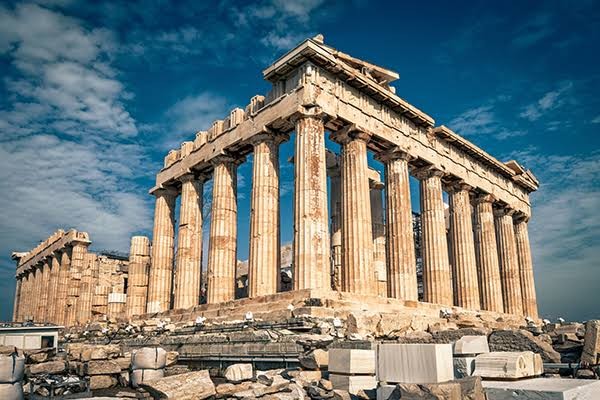
Acropolis of Athens (Source: Google Maps)
The Acropolis of Athens is an ancient citadel perched atop a rocky outcrop above the city. Its most famous structure, the Parthenon, was dedicated to the goddess Athena and exemplifies the grandeur of ancient Greek architecture. Constructed in the 5th century BC, the Parthenon is renowned for its Doric columns and intricate sculptures that depict various mythological themes. The site also includes other significant buildings such as the Erechtheion, which features the iconic Caryatids—six elegantly draped female figures serving as columns. The Acropolis is a UNESCO World Heritage site and symbolizes the cultural and political achievements of ancient Athens, influencing architecture and democracy worldwide.
Erechtheion
Just a short walk from the Parthenon, explore the Erechtheion, noted for its unique architectural design and the famous Caryatids.
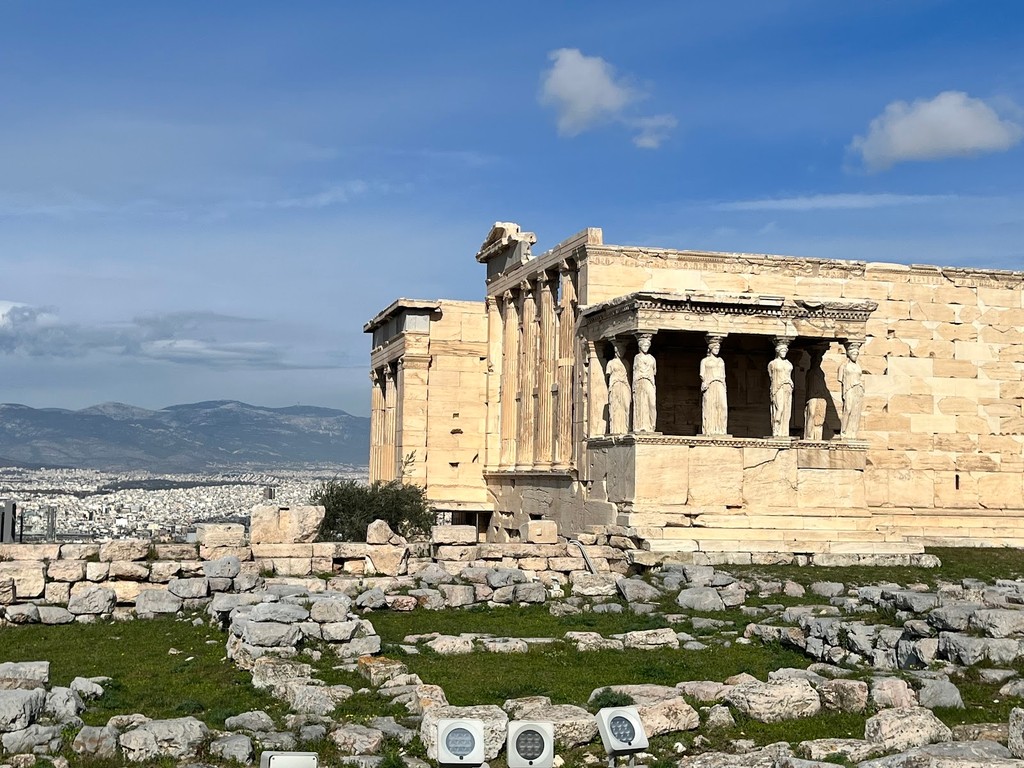
Erechtheion (Source: Google Maps)
The Erechtheion is an ancient Greek temple located on the Acropolis, known for its unique asymmetrical design and rich historical significance. Built between 421 and 406 BC, it was dedicated to Athena and Poseidon, featuring sacred sites linked to the myth of their contest for the city. The temple's most striking feature is the Porch of the Caryatids, where six beautifully draped female figures replace traditional columns. Each Caryatid is a masterpiece of classical sculpture, embodying grace and strength. The Erechtheion also housed the sacred olive tree, believed to be a gift from Athena, further enhancing its religious importance. Its intricate design and historical context make it a crucial representation of ancient Greek architecture.
Odeon of Herodes Atticus
Descend from the Acropolis to visit the Odeon of Herodes Atticus, a stunning stone theatre that still hosts performances today.
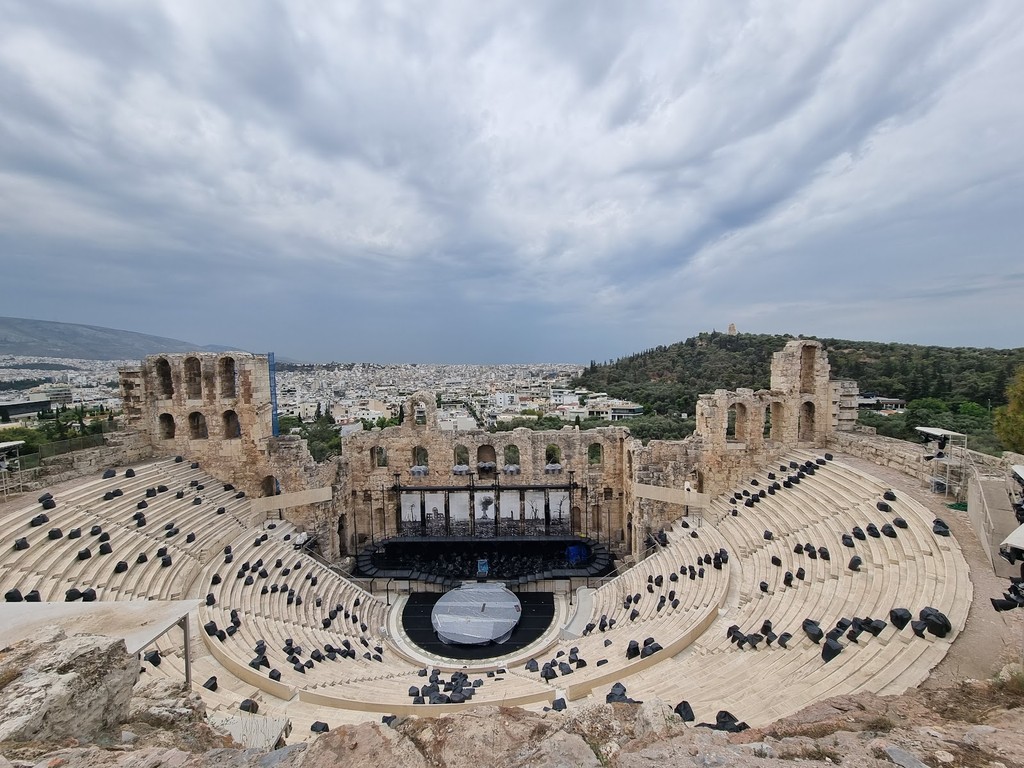
Odeon of Herodes Atticus (Source: Google Maps)
The Odeon of Herodes Atticus is a remarkable stone theater located at the foot of the Acropolis, originally constructed in 161 AD by the wealthy Roman senator Herodes Atticus in memory of his wife. This impressive structure, capable of seating around 5,000 spectators, showcases the grandeur of ancient Greek architecture with its semi-circular design, marble seats, and a stunning backdrop of the Acropolis. The Odeon was primarily used for musical performances and has been restored to host various cultural events, including the Athens Festival. Its acoustics are exceptional, making it a favored venue for concerts and theatrical performances, linking the ancient past with modern cultural expressions.
Ancient Agora of Athens
Walk to the Ancient Agora, a central public space in ancient Athens, which offers insight into the city's civic life and features structures like the Stoa of Attalos.
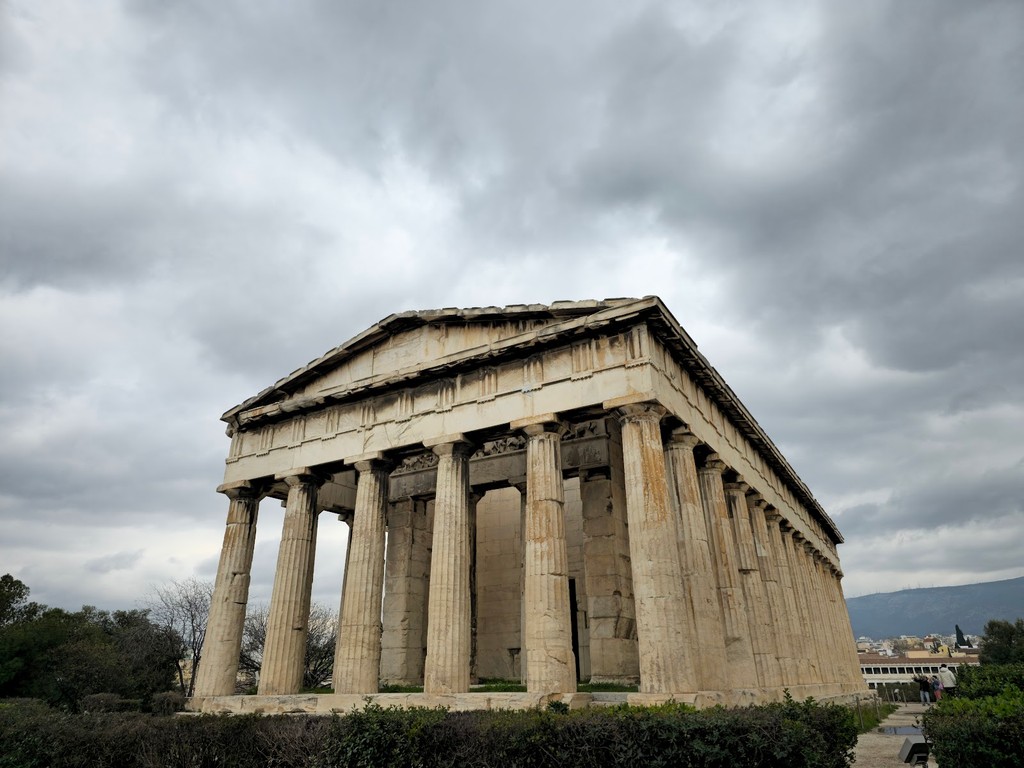
Ancient Agora of Athens (Source: Google Maps)
The Ancient Agora of Athens served as the heart of public life in ancient Athens, functioning as a marketplace and a hub for social, political, and cultural activities. Surrounded by important buildings, including the Stoa of Attalos, the Agora was the site of significant events in Athenian democracy. The Stoa, reconstructed in the 20th century, now houses a museum showcasing artifacts from the site. The Agora was also home to various temples, including the Temple of Hephaestus, dedicated to the god of craftsmanship. This area reflects the architectural evolution of Athens and provides insight into daily life, commerce, and the civic engagement of its citizens during the classical era.
Temple of Hephaestus
Located within the Ancient Agora, this well-preserved temple is dedicated to Hephaestus, the god of fire and craftsmanship.
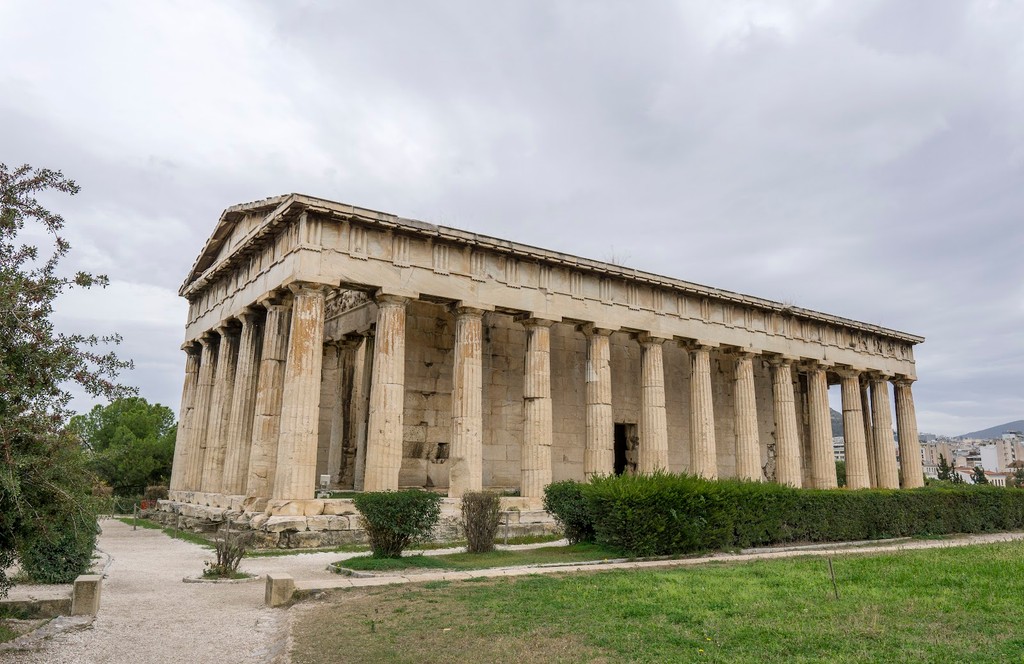
Temple of Hephaestus (Source: Google Maps)
The Temple of Hephaestus, located within the Ancient Agora, is one of the best-preserved ancient temples in Greece. Built in the 5th century BC, it was dedicated to Hephaestus, the god of fire and craftsmanship, reflecting the artistic and architectural prowess of the time. The temple features Doric columns and exquisite friezes that depict mythological scenes related to Hephaestus and Athena. Its strategic location near the Agora highlights the importance of craftsmanship in Athenian society. Unlike many other temples that fell into disrepair, the Temple of Hephaestus was preserved due to its conversion into a Christian church and later a mosque. Today, it stands as a testament to the architectural excellence of ancient Greece.
Roman Agora
Move on to the Roman Agora, an extension of the ancient marketplace that highlights the Roman influence on the city.
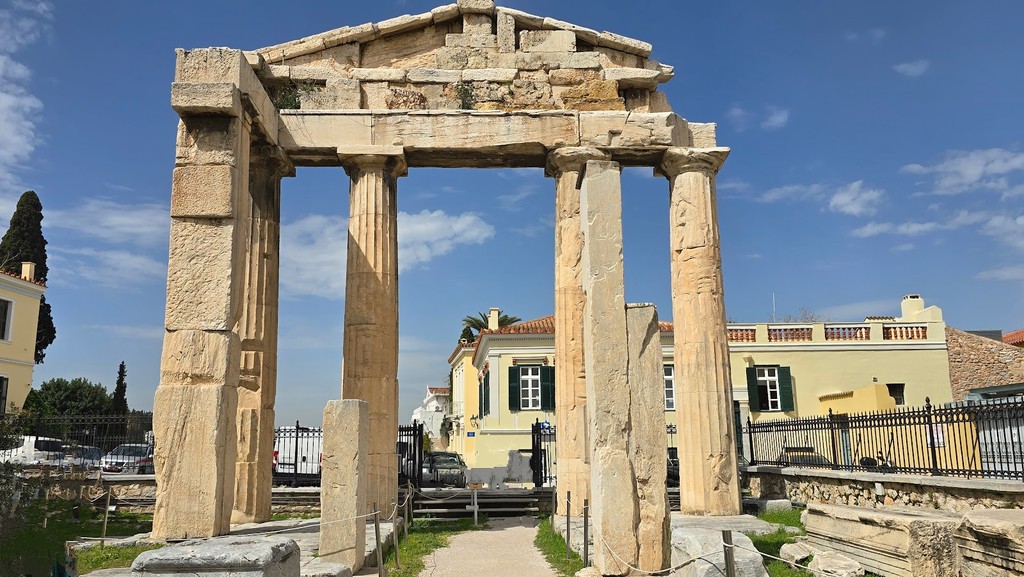
Roman Agora (Source: Google Maps)
The Roman Agora was constructed in the 1st century BC, serving as an extension of the Ancient Agora, reflecting the Roman influence on Athenian life. This marketplace featured a variety of shops, public buildings, and a central square, facilitating commerce and social interaction. Key structures within the Roman Agora include the Gate of Athena Archegetis, an impressive entrance adorned with Corinthian columns, and the Fethiye Mosque, showcasing the site's later use during Ottoman rule. The Roman Agora illustrates the blend of Greek and Roman architectural styles, demonstrating how the city evolved under different cultural influences. It remains a vital part of Athens' historical narrative, highlighting the transition from classical Greece to Roman dominance.
Tower of the Winds
Visit the Tower of the Winds, an ancient clocktower that served as both a timekeeping and meteorological device.
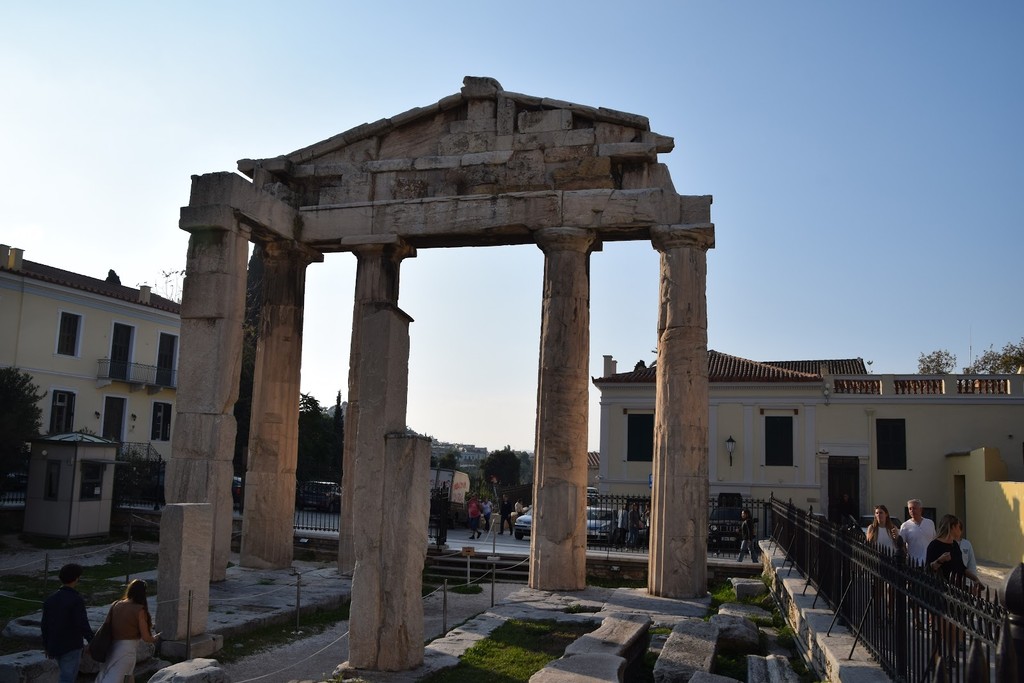
Tower of the Winds (Source: Google Maps)
The Tower of the Winds, built in the 1st century BC, is an ancient clocktower located in the Roman Agora of Athens. Designed by the astronomer Andronicus of Cyrrhus, this octagonal structure served multiple purposes, including a sundial, a water clock, and a weather vane. Each of its sides features a relief representing various wind deities, providing both artistic and functional significance. The tower was not only a timekeeping device but also a public monument, symbolizing the advanced understanding of astronomy and engineering in ancient Greece. Its preservation and influence on later architectural designs underscore its importance in the historical narrative of Athenian innovation.
Hadrian's Library
Walk to Hadrian's Library, a grand complex built by Roman Emperor Hadrian, showcasing the architectural blend of Roman and Greek styles.

Hadrian's Library (Source: Google Maps)
Hadrian's Library, established by the Roman Emperor Hadrian in 132 AD, served as a cultural center and repository of knowledge in ancient Athens. The library complex included reading rooms, lecture halls, and gardens, showcasing a blend of Roman and Greek architectural styles. It was designed to house a vast collection of scrolls and manuscripts, making it a significant intellectual hub for scholars and philosophers. The grand façade, adorned with columns and intricate decorations, reflected the grandeur of Roman architecture. Despite the passage of time and various transformations, Hadrian's Library remains a vital site for understanding the cultural and educational advancements during the Roman period in Athens.
Monastiraki Square
End your tour at Monastiraki Square, a vibrant area where you can soak in the local atmosphere and explore nearby shops and eateries.
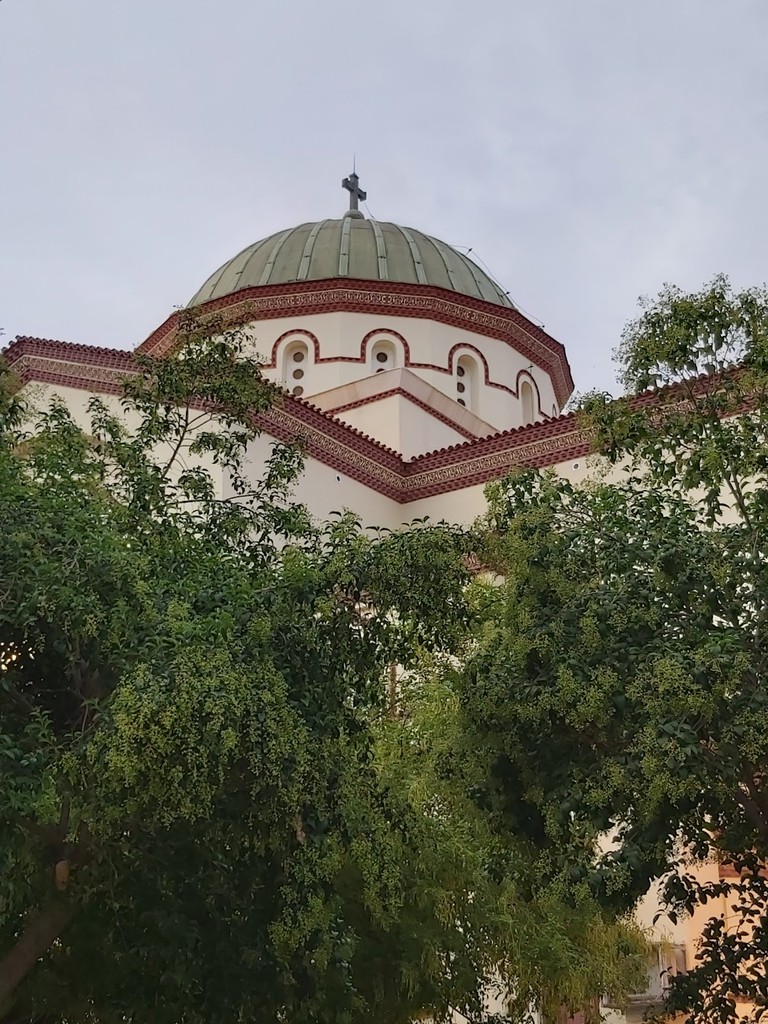
Monastiraki Square (Source: Google Maps)
Monastiraki Square is a bustling hub in the heart of Athens, known for its vibrant atmosphere and rich history. Surrounded by an array of shops, cafes, and restaurants, the square serves as a meeting point for locals and tourists alike. The square's name derives from the nearby Monastiraki Church, which dates back to the 10th century. Monastiraki is also famous for its flea market, offering a variety of antiques, crafts, and souvenirs, reflecting the city's eclectic culture. Historically, the square has been a vital center for trade and social interaction, linking various neighborhoods of Athens. Today, it stands as a testament to the city's dynamic spirit, where ancient history and modern life converge.

Your travels, your rules.
Create your own Free Walking Tours.
Set your preferences, distances and anything you want to do or see.
Completely free, no payment required.